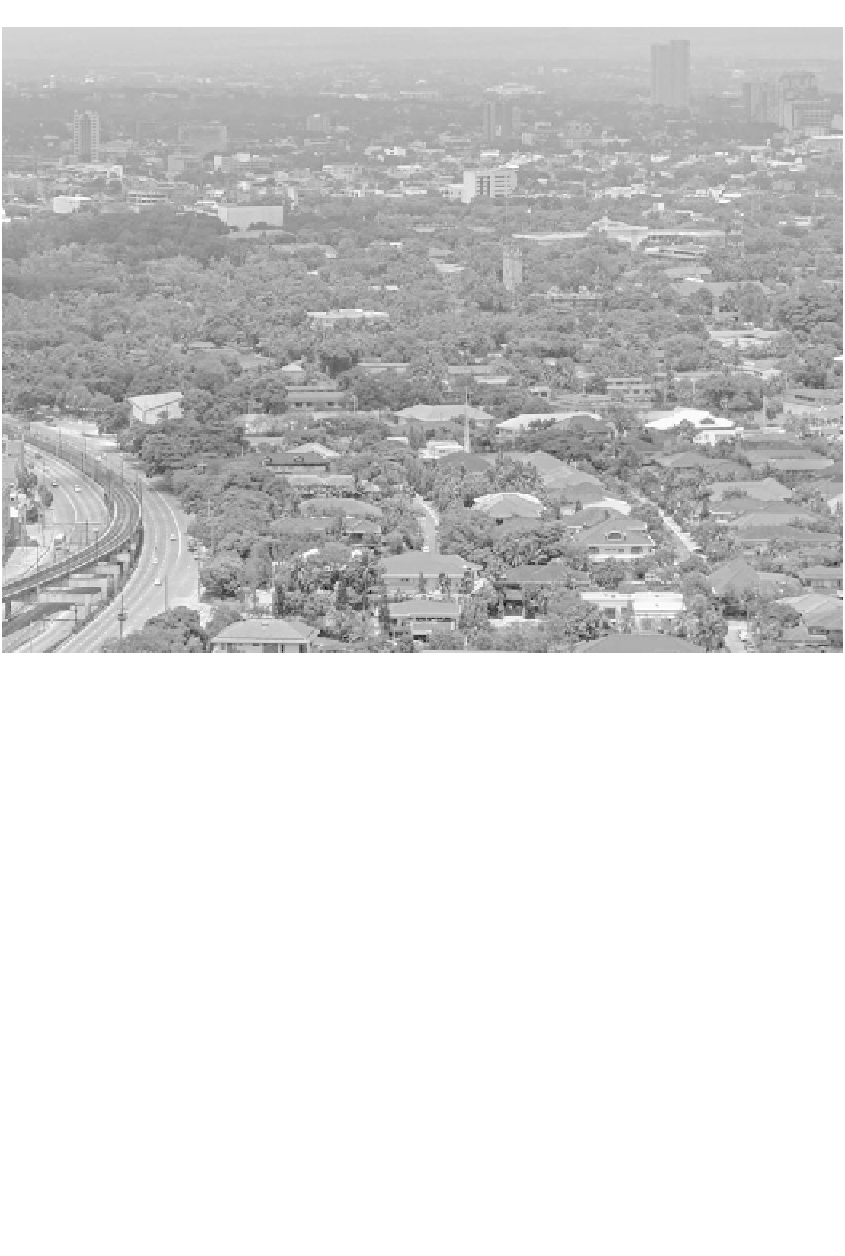Environmental Engineering Reference
In-Depth Information
Figure 1.18
Manila, Philippines. The story is often the same in the developing world, especially in the areas
built for the emerging middle classes; the affluent residential enclaves are very car dependent.
Linda
: We should've bought the land next door.
Willy
: The street is lined with cars. There's not a breath of fresh air in the neighbour-
hood. The grass don't grow anymore, you can't raise a carrot in the backyard. They
should've had a law against apartment houses. Remember those two beautiful elm
trees out there? When I and Biff hung the swing between them?
Linda
: Yeah, like being a million miles from the city.
(Miller, 1949, p. 12)
Source
: Chia-Lin Chen.
major cities in Asia is 10-12 per cent. Cities cannot accommodate high levels of motorisation
without sprawling over large areas; and centres of activity can only be effectively served
by mass transit and other forms of public transport - the car cannot deliver the appropriate
numbers to the centre without excessive levels of congestion.
In addition, an older vehicle fleet, poor maintenance practices and limited vehicle testing
mean that the environmental impacts of motorization are many times worse than those in the
West. The reliance in many cities on poor quality fuel results in high levels of pollution from
particulates, lead and other local pollutants. Transport is responsible for 80-90 per cent of the
atmospheric lead in cities where leaded gasoline is still used (World Health Organization,
2009). Even with relatively high levels of public transport and walking and cycling, these
cities face serious air pollution impacts from transport (Wright and Fulton, 2005). In Shanghai,
for instance, vehicle use contributed 87 per cent, 97 per cent and 74 per cent of CO, HC and

